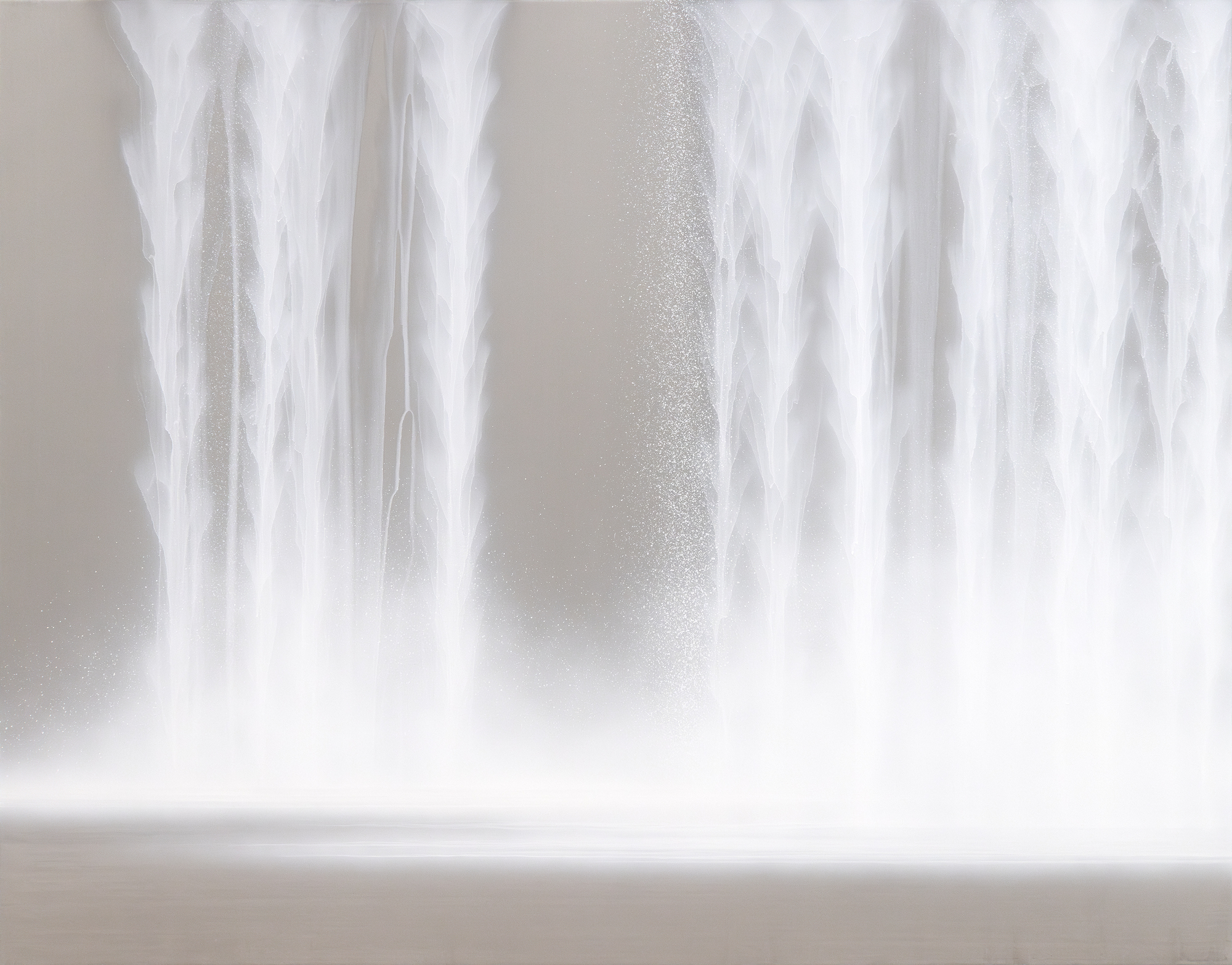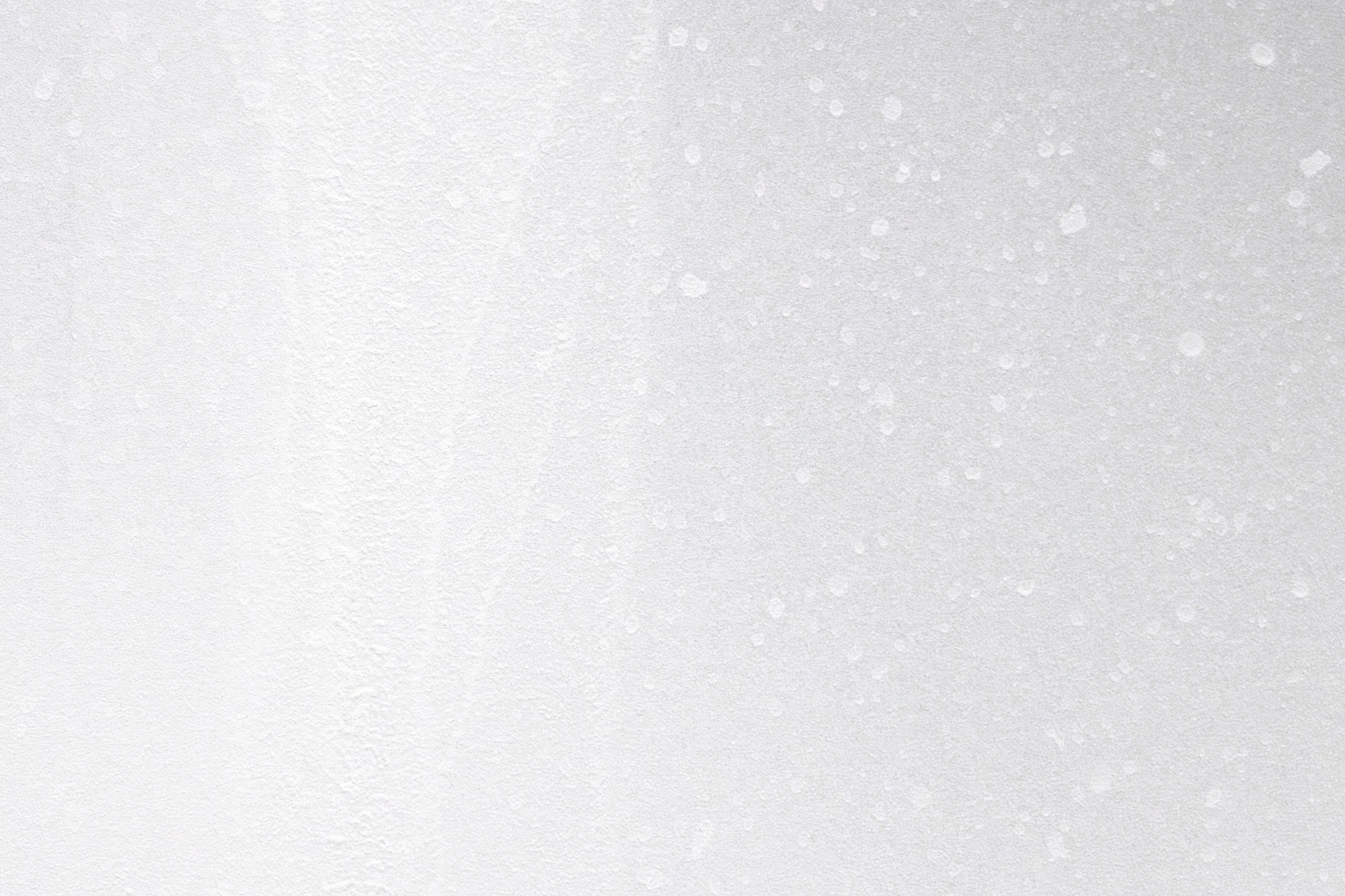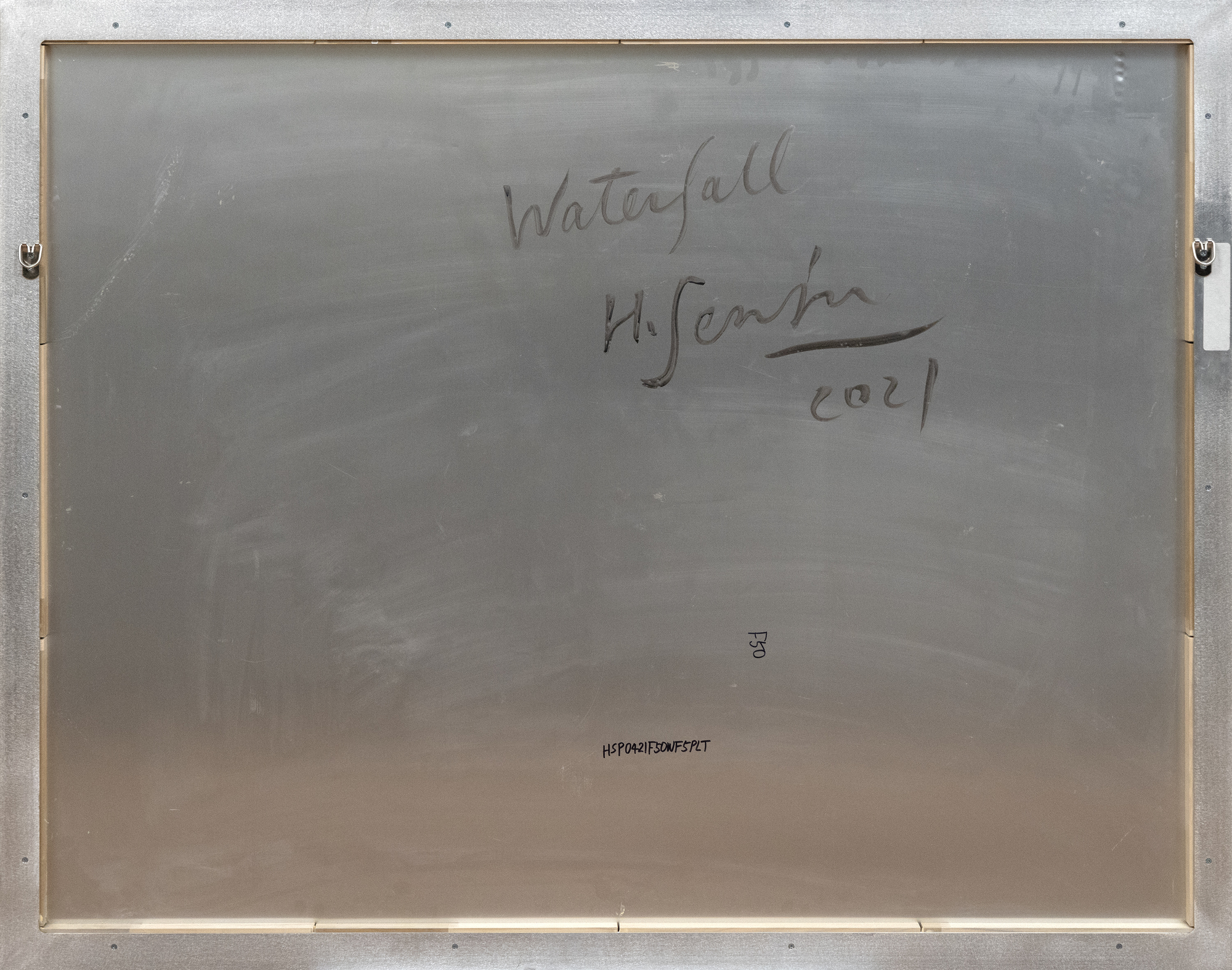HIROSHI SENJU (né en 1958)










Provenance
Collection privéePrix325,000
La finesse de Senju est évidente tout au long de l'œuvre. Il utilise du papier de mûrier, un matériau japonais traditionnel connu pour sa texture délicate et sa résistance. Les fibres naturelles du papier absorbent les pigments de manière à créer des dégradés subtils et une fluidité qui renforcent l'effet visuel de l'eau en cascade. Il utilise les techniques traditionnelles du Nihonga, telles que la superposition de lavis pour créer de la profondeur et du mouvement et l'utilisation de différents coups de pinceau pour obtenir différents effets. En outre, il incorpore des méthodes modernes telles que l'aérographe pour appliquer de fins brouillards de pigments, créant ainsi des gradients lisses et continus qui imitent les délicats jets et la vapeur associés à l'eau en cascade.
Hiroshi Senju rend hommage aux formes d'art traditionnelles de son héritage tout en repoussant les limites de l'art contemporain. Sa capacité à exprimer le sublime par la simplicité et l'abstraction fait de cette œuvre un témoignage de sa vision unique et de sa maîtrise artistique. Il s'agit d'un rappel serein de la beauté intemporelle de la nature, capturée grâce à l'habileté d'un maître peintre et artiste.


